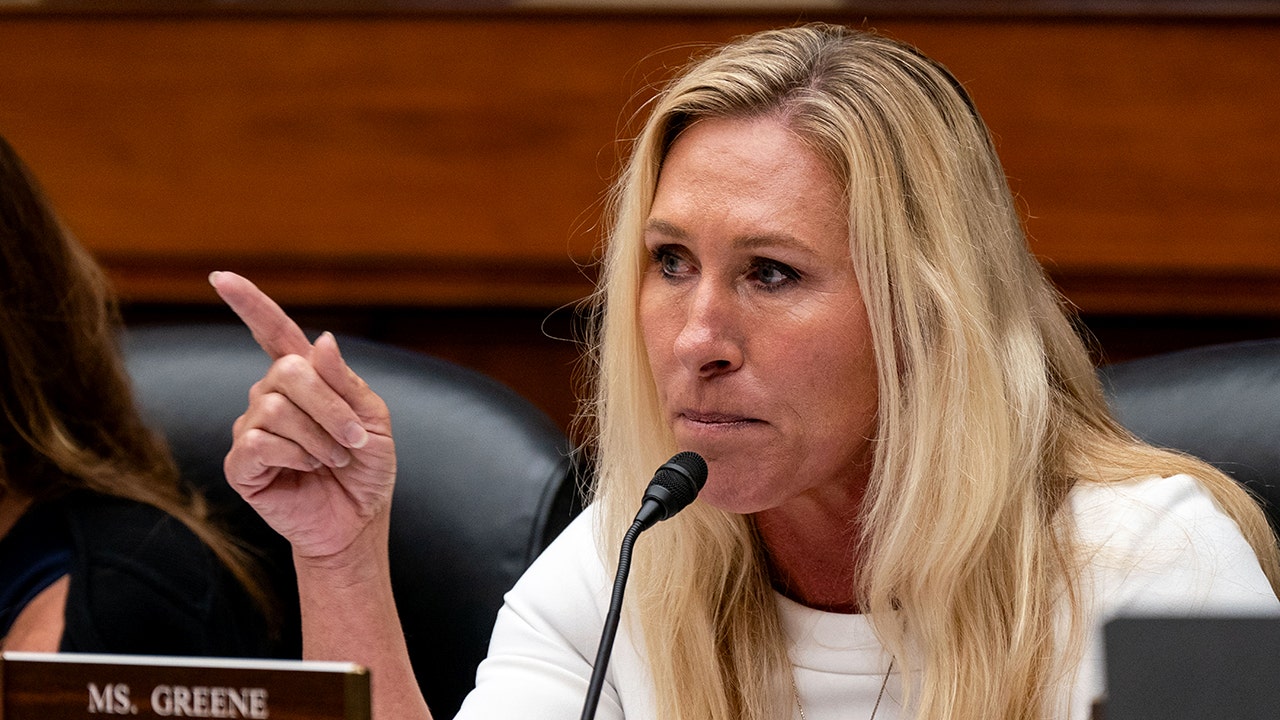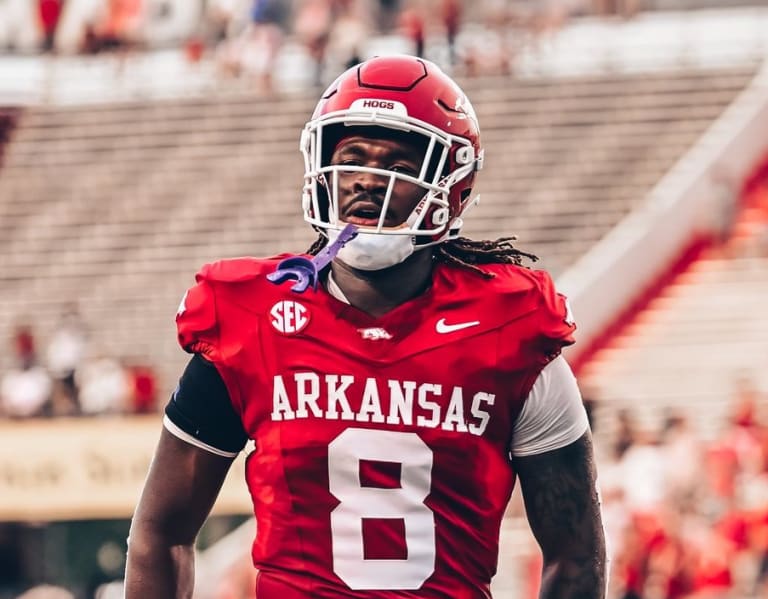Politics
How Red and Blue America Shop, Eat and Live

There are thousands of golf courses in the United States. You can find them in every state, in nearly every county; there’s probably one near you.
Take all those data points, and you can see that there are more golf courses for every 100,000 voters in redder neighborhoods than in blue ones.
There are also thousands of breweries in the U.S., but they’re much more concentrated on the coasts and in urban areas.
+60D
+40D
+20D
Even
+20R
+40R
+60R
The brewery-to-voter ratio is much higher in some of the country’s bluest precincts, where Joe Biden won the vote in 2020.
You can’t tell how people vote just by whether they enjoy a drink at a brewery or a round of golf. But the geographic distribution of these two places shows how much our surroundings differ, often unintentionally, along political lines.
It’s not just golf and brewing: People in America’s reddest neighborhoods see a different landscape of stores, restaurants and venues when they step outside their homes than those in more politically even precincts or the very bluest areas.
We wanted to look at this relationship between politics and the places around us. So, using data from the Overture Maps Foundation, we took the location of millions of different stores, restaurants, churches, parks and more and lined them up with the 2020 election results, down to the precinct.
We don’t know who goes to each place. But we know how the neighborhoods surrounding each locale vote.
The results are sometimes obvious: Yoga studios and cocktail bars skew toward deeply blue spaces, and gun stores and farms toward redder precincts. But they show how our politics, geography and lives intersect, not always in obvious ways.
In many cases, these graphs look the way they do largely because of the urban-rural divide. Certain activities, like golf, need space, and the more rural parts of the country tend to vote for Republicans. Meanwhile, a small, Democratic-leaning urban area might be a commercial hub for a redder county, with a brewery, coffee shop and bookstore; those businesses would look blue in our data set even if they were frequented equally by Republicans and Democrats.
“The placement of businesses is probably motivated primarily by income level and population density,” said Nick Rogers, a sociology professor at the University of Pittsburgh. “It just so happens that an area’s political ideology is highly correlated with these things.”
Some places, of course, are just everywhere:
And some kinds of places don’t fit easily into one bucket or the other.
Consider Baptist churches: A majority of the tens of thousands of these churches in the U.S. are in the South. That means they’re heavily concentrated in both Republican neighborhoods and largely Black, heavily Democratic areas. The resulting distribution looks like this:
Wineries, too, show a double hump. You can see that in California alone — with wine production clustered along both its bluer coastline and the redder Central Valley.
For many brands, the partisan map emerges from the regional footprint of the business. Piggly Wiggly mostly serves redder states in the South, while Food Lion is spread across a more politically varied area in the Southeast.
But the maps cut across people and places in different ways. A liberal voter in Los Angeles may have never heard of Piggly Wiggly. But it’s also possible that person has never heard of Stop & Shop, a supermarket in the bluer Northeast.
Other brands that aren’t so regionally clustered have expanded in pursuit of the clientele they already know. For example, Whole Foods, Peet’s Coffee and the upscale sportswear brand Lululemon have a high-earning urban customer base.
The Overture data in this analysis reflects businesses and places that have logged their locations on either Meta or Microsoft platforms; the data is imperfect and includes mislabeled locations and closed stores. But this is the best publicly available data set of its kind, and it lets us see patterns in the data that aren’t captured by surveys of consumer preference.
Here’s a roundup of them.
Fast food
One fast food chain in many deep blue precincts is Popeyes. The chicken purveyor is found in many Southern cities but also across the West Coast and up and down I-95.
Its competitor Chick-fil-A — despite an early 2010s controversy over gay rights — is also in many blue areas.
Among the chains found in redder places are Tennessee-based Hardee’s and Oklahoma-based Sonic.
And Burger King, like McDonald’s, is everywhere.
Coffee shops
Starbucks is by far the nation’s largest coffee chain, and while it might feel as if it’s everywhere, it hews toward slightly denser locations.
Some smaller coffee chains have a more significant skew. West Coast chains like Blue Bottle and Peet’s Coffee are common in some of the bluest areas; the largest chain in our data with a strong presence in redder areas is Scooter’s Coffee.
Breakfast spots
IHOP neighborhoods are bluer than those around the largely Midwestern restaurant Bob Evans. Huddle House is the major breakfast chain with the highest frequency in red areas in our data.
Convenience stores
7-Eleven started in Texas, but it has since spread across many blue places.
Regional convenience store chains in redder areas include Casey’s General Store and Allsup’s.
Religious institutions
The headquarters of the Mormon Church are in blue Salt Lake City. But it has many temples in rural parts of the Mountain West.
First Congregational Church, on the other hand, is a common name for a church in the United Church of Christ, a socially liberal Protestant denomination common in New England.
First United Methodist churches are in redder areas:
Hindu and Buddhist temples are both typically in more liberal areas.
Professionals
Occupations also have recognizable patterns in our data, probably in large part because of the rural-urban political divide.
Some professions lend themselves to cities:
Others, to the countryside:
And yet others can find business just about anywhere:
Leisure
A lot of the activities we do for fun also map across politics.
Services
Even basic services follow similar patterns. Fire departments skew red because they have to be everywhere, regardless of how many people live there. Even a small, rural area needs a fire department. When you consider population density, you get this:
Elementary schools, meanwhile, are more population dependent.
Train stations, including those with subway stops, tend to be in more urban areas.
And propane suppliers, though everywhere, typically have more business in rural areas, farther from natural gas pipelines.
Taken together, the patterns are a reminder of how big and varied the country is — in its places and its politics.
You can explore the distribution of 100 large coffee chains, grocery stores, shops and other places below.
See More: Political Geography of 100 Large American Businesses
Methodology
Place of interest data is from Meta and Microsoft via the Overture Maps Foundation. Nearly 10 million places were used in this analysis. This is the most comprehensive data set of its kind available publicly, but it is by no means perfect.
The data includes businesses and places that have logged their locations on either Meta or Microsoft platforms as of Oct. 23, either through an individual social media account, or when a large chain offers all of its location data to the platforms. Locations may also be included if they were mentioned by users in posts to Meta and Microsoft apps.
The data includes some erroneous locations, typos, mislabeled locations and closed stores. It may also omit businesses that have not yet put their information online. To limit the inclusion of bad data, we filtered the data using Overture’s confidence measure and excluded locations with fewer than 15 votes.
The 2020 precinct-level election results were compiled from Harvard Dataverse. For each precinct, the vote margin was calculated by comparing the number of votes for Donald Trump and Joe Biden.

Politics
Marjorie Taylor Greene wants death penalty for migrant who allegedly set woman on fire on subway: 'Finish him'

Rep. Marjorie Taylor Greene, R-Ga., is calling for the swift trial, conviction, and execution of the man charged in connection with the gruesome murder of a woman burned alive on a New York City subway.
The outspoken Republican took to social media on Tuesday to address the incident, in which Guatemalan national Sebastian Zapeta, 33, is accused of setting a woman on fire while on a train in Brooklyn.
“Death penalty, don’t waste money on a lengthy trial. Convict him and finish him. What he did is so incredibly evil,” Greene declared in a post on X. “I can’t watch the video anymore. And how it seems like no one tried to save her is beyond me. Maybe they did but it doesn’t seem like it.”
Zapeta faces charges of first- and second-degree murder, and first-degree arson, with a maximum sentence of life imprisonment with no parole.
SANCTUARY CITY NEW YORK PRESSURED TO MAKE DRASTIC CHANGE AFTER ILLEGAL MIGRANT ALLEGEDLY BURNS WOMAN ALIVE
Rep. Marjorie Taylor Greene, R-Ga., gestures while speaking as United States Secret Service Director Kimberly Cheatle testifies before the House Oversight and Accountability Committee during a hearing at the Rayburn House Office Building on July 22, 2024 in Washington, D.C. (Kent Nishimura/Getty Images)
Greene is not the only member of Congress to weigh in on the case.
Rep. Anna Paulina Luna, R-Fla., also called for capital punishment.
“Death penalty,” she tweeted.
SUSPECT ACCUSED OF BURNING WOMAN TO DEATH ON NYC SUBWAY IS PREVIOUSLY DEPORTED ILLEGAL IMMIGRANT
Rep. Andy Biggs, R-Ariz., declared in a post on X, “A woman was intentionally lit on fire on the subway today. Democrats’ soft-on-crime policies do not work.”

Sebastian Zapeta, accused of setting a woman on fire inside a New York City subway train, appears in court, Tuesday, Dec. 24, 2024, in New York. (AP Photo/Curtis Means via Pool)
CRITICS WARN OF ‘DANIEL PENNY EFFECT’ AFTER WOMAN BURNED ALIVE ON NYC SUBWAY CAR AS BYSTANDERS WATCHED
New York City Police Department Commissioner Jessica Tisch noted during remarks on Sunday that Zapeta allegedly “used what we believe to be a lighter to ignite the victim’s clothing, which became fully engulfed in a matter of seconds.” Assistant District Attorney Ari Rottenberg alleged in court on Tuesday that the suspect fanned the fire with a shirt.
Zapeta’s next court appearance is scheduled for December 27, according to online records.

Sebastian Zapeta, accused of setting a woman on fire inside a New York City subway train, appears in court, Tuesday, Dec. 24, 2024, in New York. (AP Photo/Curtis Means via Pool)
CLICK TO GET THE FOX NEWS APP
A U.S. Immigration and Customs Enforcement (ICE) spokesperson said in a statement that Zapeta had been removed from the U.S. in 2018 and then re-entered the country illegally at some point “on an unknown date and location.”
Fox News’ Bill Melugin and the Associated Press contributed to this report
Politics
Editorial: Immigrants are California's lifeblood. They need support now more than ever

The United States has always been a nation of immigrants. And nowhere is that more true today than in California, where first-generation immigrants make up more than one-quarter of the population, more than in any other state.
More than half of California, and 62% of L.A. County, is either foreign-born or has at least one immigrant parent, according to a Pew Research Center analysis of U.S. Census data.
Immigrant communities are understandably scared and bracing for the worst when Donald Trump takes office next month. Deporting immigrants is at the very top of the president-elect’s 20-point agenda, which promises to “1. Seal the border and stop the migrant invasion” and “2. Carry out the largest deportation operation in American history.”
The incoming administration has pledged to use the military and mass detention camps to deport millions of immigrants in the country illegally along with U.S. citizens in their families, to remove the temporary legal status for millions of immigrants, to reinstate Trump’s Muslim ban and to end birthright citizenship. These and other policies, if carried out, would tear apart families and communities and harm the economy.
With these clouds on the horizon, it’s critically important to recognize the role immigrants play in our communities.
Immigrants have always been the lifeblood of the nation and a source of growth, diversity and innovation. There are more than 11 million first-generation immigrants in California from all backgrounds and walks of life, from the working and middle classes to the highest echelons of society. That includes powerful figures like L.A. Archbishop José Gomez, L.A. Unified Superintendent Alberto Carvalho, labor leader Ada Briceño and some of the world’s most influential business executives, such as Google’s Sundar Pichai and Nvidia’s Jensen Huang, who are all immigrants.
As the state with the world’s fifth-largest economy, California would be among the hardest hit by the proposed policies. The people who could be swept up by mass deportation plans include teachers and coaches, child-care providers and home health and long-term care workers. California’s farms, which provide more than one-third of the nation’s vegetables and three-quarters of its fruits and nuts, are sustained largely by immigrant labor — at least half of the state’s farmworkers are undocumented — as are many other parts of the state’s economy such as construction and service work.
Aside from the economic damage, the suffering inflicted on immigrant families and their children from draconian policies would be immeasurable. Immigrant rights groups are now reactivating many of the assistance programs they put in place to deal with deportations during the first Trump and Obama administrations, including “know your rights” workshops that assist immigrants with legal responses and support. Some are creating programs that help parents make contingency plans for their children in case they are detained. Some are planning marches to rally support.
Local leaders, including the Los Angeles school board and the City Council and Los Angeles County Board of Supervisors, have taken steps to reaffirm sanctuary policies, which restrict cooperation with federal officials on immigration enforcement. Local governments have boosted funding for legal services and made other commitments to defend immigrants and their families from the Trump administration’s proposed plans. But they may well have to do more to fight back against anti-immigration excesses and use their power to protect children and families.
Everyday people can also make a difference, even in small ways, by supporting immigrants’ rights groups, volunteering to help permanent residents apply for citizenship and calling their members of Congress to demand action to protect immigrants. They can show up at rallies, protests and local government meetings to stand up for immigrants and their families in the face of dehumanizing attacks.
If the incoming administration turns its plans into a reality, it will become clear to all — including to those who were drawn to the campaign promise of a crackdown on immigration — that what hurts immigrant communities will injure everyone. At that point, the responsibility will rest with all of us to speak up and defend the most American ideal of all: That this country was built by immigrants seeking better lives and they have made America stronger in every way.
Politics
It's official: Biden signs new law, designates bald eagle as 'national bird'

The White House announced on Christmas Eve President Joe Biden signed a bill officially designating the bald eagle as the national bird.
The bill, signed Monday after being passed unanimously by Congress, amends Title 36 of the United States Code, officially appointing the predator one of the country’s national symbols.
Congress passed the bill unanimously.
President Joe Biden signed a bill Monday designating the bald eagle as the national bird. (Brandon Bell)
SENATE PASSES BILL TO STOP SHUTDOWN, SENDING IT TO PRESIDENT BIDEN’S DESK
The bald eagle, which has been featured on the Great Seal of the United States since 1782 and has its own holiday and protection act, was never technically assigned the title of “national bird.”
BIDEN ADMIN OFFICIALS NOTICED STAMINA ISSUES IN PRESIDENT’S FIRST FEW MONTHS IN OFFICE: REPORT
It was, however, designated as the national emblem by the U.S. Congress in 1782, according to USA.gov. In addition to its appearance on the Great Seal, it is featured on official documents, the presidential flag, military insignia, and currency.

The bald eagle is a bird of prey found in North America. (Adventure_Photo)
A document previously published by the U.S. Department of Veterans Affairs to VA.gov improperly noted the bird as the national bird.
“Thank you to Senators Klobuchar, Lummis, Mullin and Smith, and Representatives Finstad, Craig and Emmer for their leadership,” the White House wrote in a statement Tuesday announcing the signing of the bill.
-

 Business1 week ago
Business1 week agoFreddie Freeman's World Series walk-off grand slam baseball sells at auction for $1.56 million
-
/cdn.vox-cdn.com/uploads/chorus_asset/file/23951353/STK043_VRG_Illo_N_Barclay_3_Meta.jpg)
/cdn.vox-cdn.com/uploads/chorus_asset/file/23951353/STK043_VRG_Illo_N_Barclay_3_Meta.jpg) Technology1 week ago
Technology1 week agoMeta’s Instagram boss: who posted something matters more in the AI age
-
/cdn.vox-cdn.com/uploads/chorus_asset/file/24924653/236780_Google_AntiTrust_Trial_Custom_Art_CVirginia__0003_1.png)
/cdn.vox-cdn.com/uploads/chorus_asset/file/24924653/236780_Google_AntiTrust_Trial_Custom_Art_CVirginia__0003_1.png) Technology4 days ago
Technology4 days agoGoogle’s counteroffer to the government trying to break it up is unbundling Android apps
-

 News5 days ago
News5 days agoNovo Nordisk shares tumble as weight-loss drug trial data disappoints
-

 Politics5 days ago
Politics5 days agoIllegal immigrant sexually abused child in the U.S. after being removed from the country five times
-

 Entertainment6 days ago
Entertainment6 days ago'It's a little holiday gift': Inside the Weeknd's free Santa Monica show for his biggest fans
-

 Lifestyle6 days ago
Lifestyle6 days agoThink you can't dance? Get up and try these tips in our comic. We dare you!
-

 Technology7 days ago
Technology7 days agoFox News AI Newsletter: OpenAI responds to Elon Musk's lawsuit


















